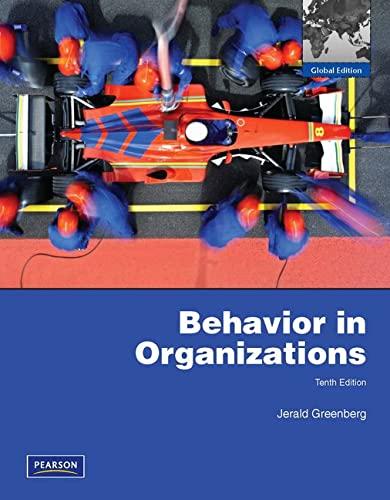International knowledge has become a top priority for managers at KPMG. KPMG provides audit, tax, and advisory
Question:
International knowledge has become a top priority for managers at KPMG. KPMG provides audit, tax, and advisory services to clients located around the world. The company is an amalgam of firms located in approximately 180 countries; these businesses come together under the KPMG umbrella.
According to Aidan Walsh, head of KPMG’s Global Mobility program, because today’s clients are operating in foreign locations, KPMG must be prepared to provide the services they need in those markets. To that end, the company has implemented a program in which managers from one country are sent on assignments in another country.
The goal is to allow supervisors to gain business experience in foreign markets and languages; obtain cross-cultural experience; and possibly earn foreign certifications.
Foreign assignments at KPMG last from three months to five years. Walsh believes that because so many managers today want to acquire foreign experience, the program has given KPMG a competitive advantage when it comes to hiring.
■ Social Responsibility at Terra Cycle Social responsibility is important at Terra Cycle, a company that makes consumer products from garbage. The company was founded by then–college student Tom Szaky, who initially developed his ideas for the company by entering and winning various business-plan competitions. However, it was not until he won a contest paying $1 million that Szaky’s commitment to being an eco-capitalist solidified.
The contest rules required Szaky to change his focus from using waste materials to produce and package consumer products and to using more traditional inputs to produce an organic product. Szaky refused to compromise his ideals, rejected the prize money, and scraped together enough funds to start the business on his own. He claims that he is not an environmentalist; rather, he simply wants to do the right thing for society and the world. Eco-friendly products usually are more expensive to produce than standard ones, keeping them from mainstream consumers. Szaky hopes to change this by showing how an eco-capitalist can make money while helping the environment simply by recognizing the value in waste.
■ Work/Life Balance Providing a good balance between work and outside interests and responsibilities is important at Ernest & Young. In response to a survey indicating that employees valued flexibility in their jobs, the company has attempted to create an atmosphere in which people have the opportunity to achieve not only their career goals, but also their personal goals, whether these include family obligations or some other interest. Ernest & Young has adopted what it refers to as its People First program, according to which the firm commits to doing right for employees, who in turn commit to doing right for the firm. Employee Maryella Goekel notes that the People First program enables workers to be 100 percent dedicated to whatever they are doing at a particular moment, whether it’s outside or inside the firm. Goekel also notes that Ernest & Young tries to treat workers like adults rather than children and makes the assumption that once an employee knows what has to be accomplished, it will be done.
One person who has worked at Ernest & Young for more than a decade says that the firm’s dedication to ensuring that workers have a balance between work and life through its flexible system gives the company a competitive advantage when it comes to employee retention.
Discussion Questions
1. Can KPMG be classified as a multinational enterprise? If so, how does this designation change the services KPMG offers?
2. How have the three major forces driving globalization (as discussed in Chapter 1) facilitated KPMG’s global expansion, and what new challenges and opportunities do these forces bring to KPMG?
3. How does the Global Mobility program at KPMG help managers avoid both culture shock and the kind of ethnocentric behavior commonly found in managers initially exposed to new cultures?
4. How does Terra Cycle’s business model reflect the basic elements of the pyramid of corporate social responsibility, as presented in Chapter 2?
5. Which of the forms of socially responsible behavior does Terra Cycle pursue?
6. How does the virtuous circle concept discussed in the text relate to Terra Cycle’s approach to strategy and profitability?
7. Using the discussion of Theory X versus Theory Y in Chapter 1, explain why a work/life balance is important for employees at Ernest & Young.
8. How does Ernest & Young’s People First program relate to the human relations movement described in Chapter 1?
9. How do the family friendly policies at Ernest & Young help the company meet the challenges associated with a demographically diverse workforce?
Step by Step Answer:






